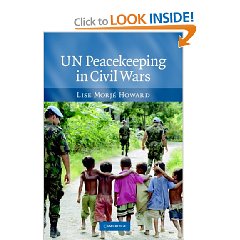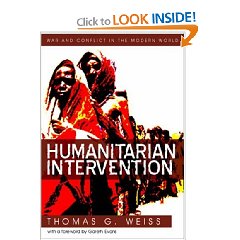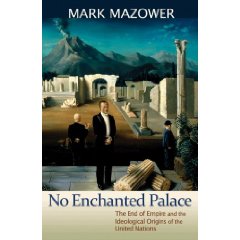
Timely and pathbreaking, Securing the Peace is the first book to explore the complete spectrum of civil war terminations, including negotiated settlements, military victories by governments and rebels, and stalemates and ceasefires. Examining the outcomes of all civil war terminations since 1940, Monica Toft develops a general theory of postwar stability, showing how third-party guarantees may not be the best option. She demonstrates that thorough security-sector reform plays a critical role in establishing peace over the long term.
Much of the thinking in this area has centered on third parties presiding over the maintenance of negotiated settlements, but the problem with this focus is that fewer than a quarter of recent civil wars have ended this way. Furthermore, these settlements have been precarious, often resulting in a recurrence of war. Toft finds that military victory, especially victory by rebels, lends itself to a more durable peace. She argues for the importance of the security sector–the police and military–and explains that victories are more stable when governments can maintain order. Toft presents statistical evaluations and in-depth case studies that include El Salvador, Sudan, and Uganda to reveal that where the security sector remains robust, stability and democracy are likely to follow. [Phi Beta Iota: when rebels win, absent outside subsidies, they generally held the moral high ground to begin with–Saudi Arabia is a good example of a regime ready to fall hard.]

Virginia Page Fortna has written a compelling and courageous book–compelling in the reinforcing comparisons that it makes between aggregate data and case-based research, and courageous in its first-person interviews, conducted with those who perpetrated as well as ended civil wars. The book bridges the worlds of the high-flying ‘quant' who sees only forests of data, and the ground-based case researcher knee-deep in political leaf litter. Drawing particular strength from the oft-ignored perspective of those on whose behalf peacekeepers do their work, Fortna's convergent analyses advance our understanding not only of how peacekeeping works but why.

“A superb systematic examination of how different types of organizational learning contributed to several peacekeeping successes…and how organizational dysfunction and the absence of sustained learning can hamper UN peacekeeping operations. This is not just another book on the difficulties of post-Cold War UN peacekeeping in complex conflicts and is a must-read for practitioners and scholars alike.” Margaret P. Karns, University of Dayton [Phi Beta Iota: emphasis added–MINUSTAH (Haiti has been a major success story under piror conditions, an abject failure in the aftermath of the earthquake of 2010–neither the leadership nor the Joint Military Analysis Cell (JMAC) was able to adapt.]

The authors use extensive data and quantitative measures in order to examine every civil war since the end of the Second World War to establish why conflicts occur. I was particularly impressed at the level of statistical analysis employed; especially their concept of the ‘Triangle of Peace'to examine such variables as the degree of hostility, local capacities in the country involved in conflict and how international capacities assist in the post-conflict processes. The data supports the authors' arguments that the UN is not so good at attempting to enter existing conflicts in a bid to try and stop them. The UN seems more suited at provision of various support specialities in rebuilding after the conflict is over. The authors also provide extensive comparison of UN Missions operating under Chapter Seven and Six of the UN Charter. They contend that a UN Mission is successful only when supported with a good mandate and adequate resources. Comparison of the successes (East Timor and Cambodia) are contrasted with not-so-successful ventures such as Somalia, Rwanda and Cyprus. Robert D. Kudiba [Phi Beta Iota: Emphasis added–the primary reason the UN (and the US) get it wrong so often if for lack of a proper multinational decision-support capability.]

A singular development of the post Cold-War era is the use of military force to protect human beings. From Rwanda to Kosovo, Sierra Leone to East Timor, soldiers have rescued civilians in some of the world's most notorious war zones. Drawing on two decades of research, Thomas G. Weiss provides a compelling introduction to the theory and practice of humanitarian intervention in the modern world. He examines political, ethical, legal, strategic, economic, and operational dimensions and uses a wide range of cases to highlight key debates and controversies.
This succinct and highly accessible survey is neither celebratory nor complacent. The author locates the normative evolution of what is increasingly known as “the responsibility to protect” in the context of the war on terror and the 2005 UN World Summit. The result is an engaging exploration of the current dilemmas and future challenges for international humanitarian action in the 21st Century.

After the Holocaust, the world vowed it would never again permit such mass atrocity crimes, yet many have since gone unchecked, from the killing fields of Cambodia to the machetes of Rwanda to the ongoing nightmare in Darfur. Gareth Evans, president of the International Crisis Group, explains this lack of government action. In a more hopeful vein, however, he also shows how the emergence of a new international norm can protect the peoples of the world from mass crimes. The Responsibility to Protect (or R2P) concept was born in 2001 and embraced at the UN World Summit in 2005. The heart of this new international norm is the belief that if sovereign governments fail to protect their own people from genocide, ethnic cleansing, or other major crimes against humanity, then the wider international community must take whatever action is appropriate. The new norm emphasizes assistance and prevention, not coercion, but it also accepts that it is sometimes right to fight. The bottom line is that the world cannot just stand by. Never again is still more a hope than a promise, however. The 2005 consensus remains politically fragile, with many developing states worrying that R2P goes too far or is too easily capable of misuse by major powers. Political will must be solidified, and effective institutional capacity must be created. This important book meets these challenges head on, clarifying misunderstandings about the new norm's scope and limits and spelling out the steps needed to make R2P work in practice. Evans shows how Responsibility to Protect is far better equipped to end mass atrocity crimes than is the right to intervene or any other humanitarian intervention doctrine of the past. The book is enlivened throughout by real-world examples, analysis of current events, and assessments drawn from the author's own vast experience.

British aid worker Foley paints a bleak portrait of humanitarian intervention in this book that exorcises his failed missions during a career with such organizations as Amnesty International and the UNHCR. He revisits his time in Kosovo, Afghanistan and Indonesia, enumerating the knotty ethical dilemmas inherent in offering humanitarian aid (i.e., the blurring boundary between “development and humanitarian action” or the challenges of maintaining political neutrality while providing aid). Foley doesn't dissect these dilemmas with enough clarity for a nonexpert reader to understand the pros and cons of modern interventionism. Moreover, Foley is too exasperated by a morass of “too little, too late” missions over the past 15 years to objectively analyze interventionism's touchy relationship to international law. He refrains from offering solutions and is content to point out thorny problems ranging from the use of force and usurpation of national sovereignty to cultural insensitivity. His bitterness suffuses the book, which ends on a hollow prescription: “the need to develop a rather different discourse on human rights interventionism, one which is more modest in recognizing its limitations, but more ambitious in recognizing what needs to be done.” Publishers Weekly. [ Phi Beta Iota: We disagree with the scornful tone of the reviewer. The top down rankism model does not work, especially when the US and UN are completely ignorant of ground truth including tribal factionalism and indigenous government corruption. We need a new model, intelligence-driven, distributed capabilities, voluntary harmonization through shared information.]

Mark Mazower warns in his elegantly written intellectual history of the organization, the U.N. is not–and has never been–quite what it seems. In their rush to portray liberal internationalism as the height of human achievement, too many historians have forgotten what Mazower regards as the real ideological impulse behind the U.N.'s creation: preservation of the British Empire and white rule over Europe's colonial possessions. (Sasha Polakow-Suransky American Prospect ) [Mazower] has identified a gigantic contradiction in the United Nations' very DNA that may explain how the ambitious, well-intentioned body evolved into Mess-on-East River. (Marc Tracy New York Times Book Review ) One of the most distinguished historians of his generation. (New York Review of Books ) The finest historian of twentieth-century Europe. (Jonathan KeatesTimes Literary Supplement ) A slim yet provocative volume that reveals the UN's origins in colonial imperialism. (Anna Mundow Boston Globe )



